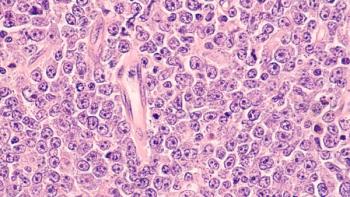
FDA Broadens Eligibility Criteria for Pediatric Clinical Trial Participants
The FDA recently released guidelines expanding clinical trial eligibility for investigational cancer drugs for pediatric patients.
The FDA recently released guidelines expanding clinical trial eligibility for investigational cancer drugs for pediatric patients.1
“Unnecessarily restrictive eligibility criteria may slow patient accrual, limit patients’ access to clinical trials, and lead to trial results that do not fully represent treatment effects in the patient population that will ultimately use the drug,” the guidelines said.
The agency stressed that the proper inclusion and exclusion of patients is vital to trial safety, and should be based on the mechanism of action of the investigated drug, targeted disease/patient population, anticipated safety of the drug, availability of adequate safety data, and the ability to recruit trial participants from the patient population to meet the trial’s endpoints.
Traditionally, children (defined as patients between the ages of 2 and 11) and adolescents (ages 12 to 17) have been excluded from adult clinical trials. Studies of drugs for these younger people typically happen after 1 or more adult trials, or after the drug in question has been approved for the adult population.
These new guidelines are hoping to change that, when appropriate.
“Eligibility of specific pediatric population for a cancer clinical trial should be considered when there is a clinical evidence or a strong scientific rationale to suggest that pediatric patients with a specific cancer diagnosis, histologic subtype, or tumor associated with the same relevant molecular target may benefit and when there is compelling nonclinical and/or adequate clinical information to sufficiently justify patient risk,” the guidelines read.
However, before allowing pediatric patients to enroll in trials, the following must be considered, according to the FDA:
- Ethical considerations: There must be a benefit-risk profile that is suspected to be as favorable as treatments already available.
- Regulatory considerations: Trials must meet requirements established in the Federal Food, Drug, and Cosmetic Act, which can include preliminary efficacy information from adult trials.
- General considerations: Clinicians must take into account the clinical needs of the children involved in the trial, as well as late effects and long-term follow up.
The FDA also elaborated on different trial stages for pediatric patients.
- Early-phase trials: These should be for patients with conditions that have no curative options.
- Late-phase trials: These should be for the biology of the disease, scientific objectives, and existing data — including preliminary efficacy.
“Broadening cancer trial eligibility criteria can maximize the generalizability of trial results and the ability to understand the therapy’s benefit-risk profile across the patient population likely to use the drug in clinical practice and should be considered to avoid jeopardizing patient safety,” the guidelines say.
Reference
- U.S. Department of Health and Human Services, Food and Drug Administration, Oncology Center of Excellence, CDER, CBER. Cancer Clinical Trial Eligibility Criteria: Minimum Age Considerations for Inclusion of Pediatric Patients Guidance for Industry and IRBs. July 2020. https://www.fda.gov/media/121318/download. Accessed July 13, 2020.
Newsletter
Knowledge is power. Don’t miss the most recent breakthroughs in cancer care.
















































































